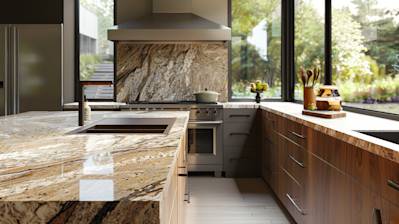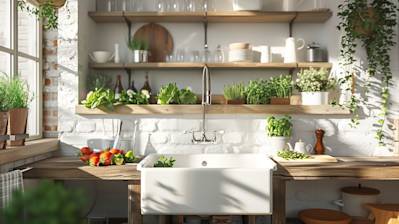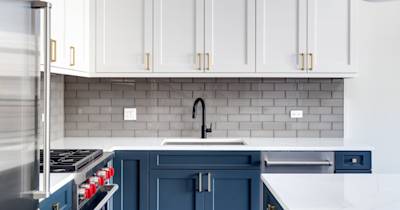Kitchen Remodel From Start to Finish: Your Step-by-Step Guide
By Peter Kravchuk
Share —
The kitchen is often considered the heart of the home. It's where families gather to cook, share meals, and create lasting memories.
But if your kitchen feels outdated, cramped, or dysfunctional, it can put a damper on those experiences. A well-planned kitchen remodel can completely transform your space, making it both beautiful and efficient.
This amazing guide will take you through every step of the kitchen remodel process, from setting a budget and planning your layout to the final inspection.
Whether you're dreaming of a minor refresh or a complete overhaul, this guide will help you with all the knowledge and resources you need to create your dream kitchen.
Step 1: Planning and Budgeting
Before diving headfirst into demolition, it's crucial to spend some time planning and budgeting. This will help ensure your project stays on track and avoids any costly surprises down the road.
Setting a Budget:
Kitchen remodels can range in cost depending on the size and scope of your project. Here are some factors to consider when setting your budget:
- Size of your kitchen: A larger kitchen will naturally cost more to remodel than a smaller one.
- Scope of the project: Are you planning a minor update, a mid-range remodel, or a complete gut renovation?
- Materials: The price of things you buy for your kitchen can vary a lot. This includes cabinets, countertops, and appliances.
- Labor: The cost of labor will depend on your location and the experience of your contractor.
Setting a Budget You Can Stick To:
- Do your research: Before you dive in, look up the average cost of kitchen remodels in your area. This will give you a ballpark figure to work with.
- Shop around: Get quotes from a few different qualified kitchen remodelers. Don't just go with the first one! Compare prices and see what each contractor offers.
- Expect the unexpected: There might be costs you don't think of at first, like permits or having to fix something unexpected during demolition. Set aside some extra money in your budget to cover these surprises.
- Plan for padding: It's always a good idea to add a cushion to your budget. This way, if something unexpected comes up, you won't be scrambling for cash.
Schedule a Design Consultation:
Once you have a general idea of your budget, it's time to schedule a consultation with a professional Interior Designer specializing in Kitchen Remodels. An experienced designer can help you:
- Dream Kitchen Brainstorming: Talk to them about the look and feel you want for your kitchen, how you typically cook, and how your family uses the space.
- Optimize your layout: A good designer can create a layout that gives you tons of storage, makes moving around the kitchen easy, and fits your cooking style perfectly.
- Choose materials and finishes: From cabinets to countertops and flooring to backsplashes, designers know all the options! They can help you pick materials that look great and work well in your kitchen.
- Stay within your budget: Designers can help you figure out what's most important to you and find creative ways to stay on budget.
Step 2: Demolition and Preparation
With your plan and budget in place, it's time to say goodbye to your old kitchen. This phase typically involves:
- Demolition: A hardworking crew will come in and rip out all your old stuff - cabinets, countertops, appliances, and even the floor. This usually takes a few days.
- Getting the Space Ready: Once everything's gone, it's time to fix any problems with the plumbing and electrical systems. They'll also patch up any cracks in the walls or ceiling, and maybe even put in new drywall if needed. This is like prepping a canvas for a painting, but instead of a masterpiece, you'll get a brand new kitchen!
Step 3: Building Your Dream Kitchen!
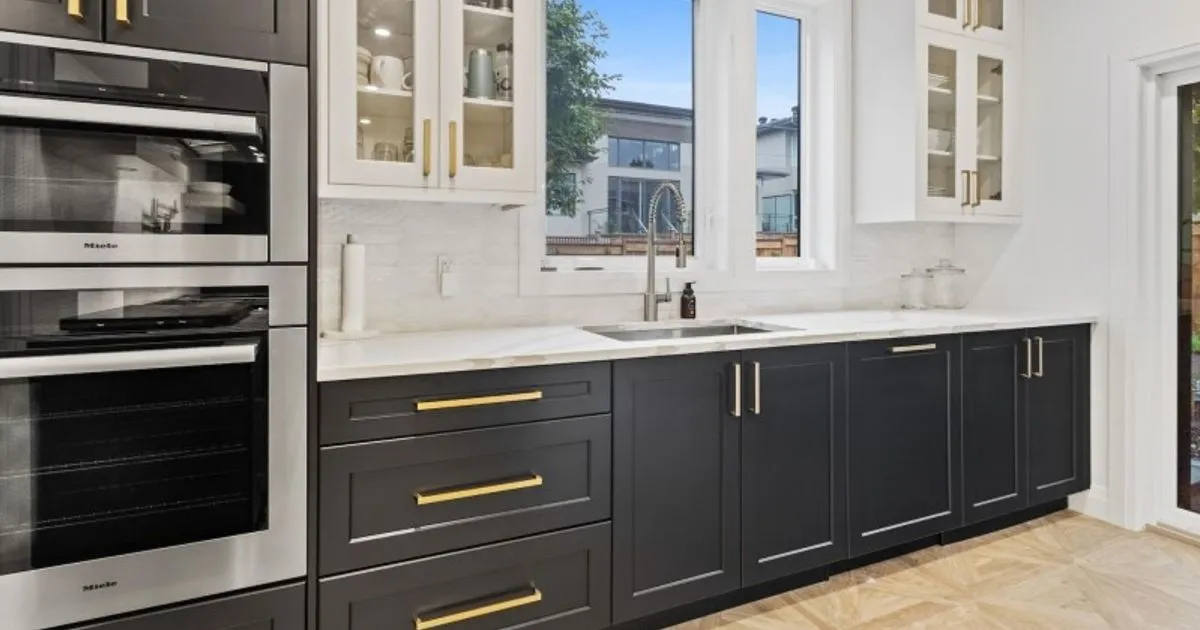
Now comes the exciting part - bringing your new kitchen to life! This phase involves the installation of all the major elements.
Kitchen Cabinets:
Cabinets are a big investment in your kitchen remodel, both for your wallet and how your kitchen looks. Here are some things to think about when picking them out:
- Storage Space: How much stuff do you need to store in your kitchen? Make sure the cabinets you choose have enough space for all your dishes, pots, pans, appliances, and anything else you keep in the kitchen.
- Cabinet Layout: The way you arrange your cabinets can make a big difference in how easy it is to use your kitchen. Think about having a mix of tall cabinets up high, shorter cabinets below for easy reach, and drawers for things you use a lot.
- Cabinet Materials: Cabinets come in all sorts of materials, like real wood, laminate (which is like a fake wood), and thermofoil (a kind of plastic coating). Each material has its pros and cons - some are more durable, some are cheaper, and some just look nicer.
Kitchen Layout:
The way your kitchen is arranged should make cooking easier and fit how you like to move around. Here are some popular layouts to consider:
- Galley Kitchen: This is a long and narrow kitchen with countertops on both sides. It's a good choice for small spaces because it keeps everything close at hand.
- L-Shaped Kitchen: This layout has countertops along two walls that meet at a corner. It offers more counter space and storage than a galley kitchen and works well in many different sized rooms.
- U-Shaped Kitchen: This layout puts cabinets and counters on three walls, making it great for maximizing storage and counter space. It's ideal for bigger kitchens where multiple cooks might be working at once.
- Island Kitchen: An island in the middle of your kitchen adds more counter space, storage, and even seating! This is a great option for open kitchens where you like to entertain guests.
Consider these factors when planning your kitchen layout:
- Plumbing and Electrical Lines: Where your pipes and wires are buried in the walls affects where you can put your sink, dishwasher, and other appliances.
- The flow of traffic: Ensure there's enough space for people to move around comfortably without feeling cramped.
- Appliance Placement: Think about how you cook! Put your fridge near where you prep food, and the oven close to the stovetop to make things easier on yourself.
Countertop Installation:
Countertops are a major design element in your kitchen and a crucial work surface. Here are some things to consider when choosing countertops:
- Material: You have options! Granite, quartz, laminate (like fake wood), and butcher block are all popular choices. Each has its pros and cons: some are super tough, some are easier on the wallet, and some just look fancier.
- Color and pattern: Pick a color and pattern that complements your cabinets and the overall style of your kitchen.
- Functionality: Consider your cooking style and needs when choosing a countertop material. For example, if you do a lot of baking, you might want a heat-resistant countertop like granite or quartz.
Backsplash Installation:
A backsplash is like jewelry for your kitchen - it adds a decorative touch and keeps your walls clean from splatters. Here are some popular backsplash materials:
- Classic Ceramic Tile: This comes in all sorts of colors, patterns, and finishes, so you can find something for any style.
- Natural stone: Materials like granite or marble can add a touch of luxury to your kitchen.
- Glass tile: Creates a sleek and modern look and can help to make a small kitchen feel larger.
- Easy-Clean Stainless Steel: A popular choice for modern kitchens because it looks sharp and wipes clean easily.
Flooring Installation:
The right flooring can elevate the look and feel of your kitchen. Here are some popular kitchen flooring options:
- Hardwood: A timeless and elegant choice that adds warmth and value to your home. However, hardwood can be susceptible to moisture damage.
- Tile: Tile is super durable and easy to clean, and it comes in a ton of styles to match your kitchen's look.
- Luxury Vinyl Plank (LVP): This is a budget-friendly option that's also water-resistant. It comes in styles that look like wood or stone, so you can get the high-end look for less.
Step 4: Appliances and Finishing Touches
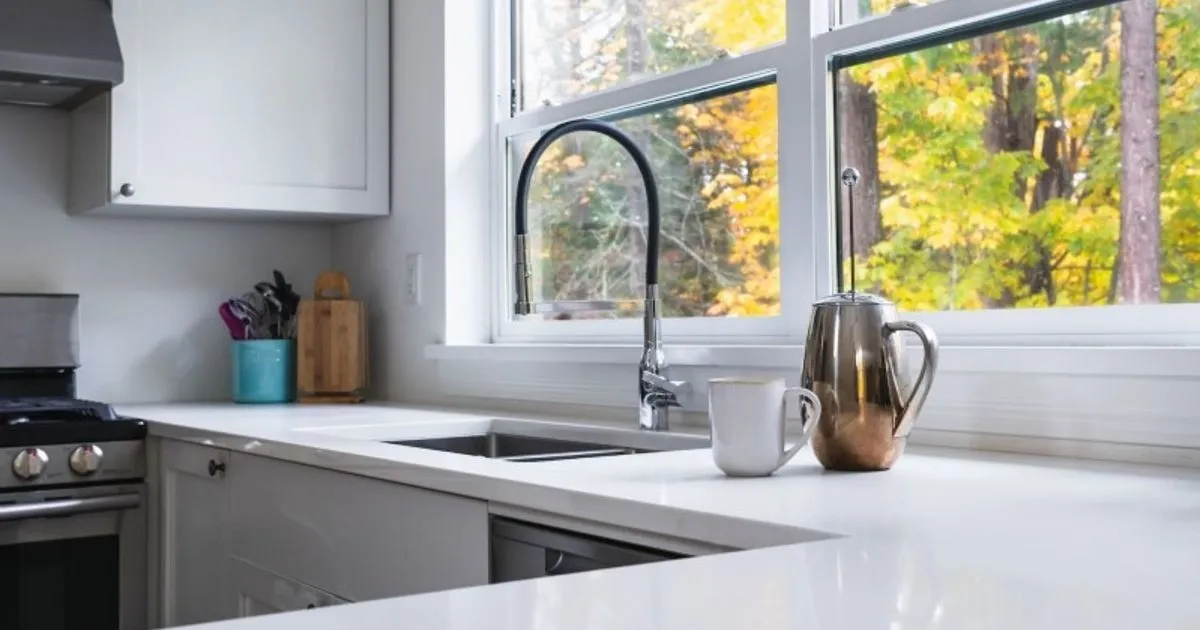
With the major elements in place, it's time to focus on the details that bring your kitchen to life.
- Appliance installation: Get your new sink, dishwasher, fridge, and any other fancy gadgets all installed and ready to use.
- Plumbing Parts: Install your faucet, sprayer, and any other plumbing features that make your life easier.
- Lighting and Ventilation: Make sure you have good lighting to see what you're cooking, and don't forget to put in a vent fan over your stovetop to suck up smoke and smells.
- Hardware and accessories: Cabinet knobs, pulls, drawer pulls, and cabinet lighting can add a personal touch to your kitchen.
- Final touches: This includes caulking around your countertops and sinks, adding cabinet hardware, and putting up any decorative touches you like, such as a pot rack or a spice rack.
Step 5: Inspection and Enjoyment!
After everything is installed and checked to make sure it's safe and working well, it's time for the final walkthrough with your kitchen remodeling contractor. This makes sure that everything is working properly and meets all building codes. Once you receive your remodeling warranty, you're ready to enjoy your beautiful new kitchen!
Bonus Tip!
Obtaining the necessary permits and inspections is a crucial but sometimes overlooked aspect of kitchen remodels. Here's a breakdown of what you need to know:
- Permits: Most kitchen remodels will require permits from your local building department. These permits authorize the work being done and ensure it complies with all safety and building codes. The specific permits you'll need will depend on the scope of your project.
- Inspections: Once you have the permits, the building department will come out to check on your remodel at different stages. This is to make sure everything is being done safely and according to the rules (building codes).
Getting these things figured out early can save you time and money in the long run. By planning ahead, you can avoid delays and make sure your dream kitchen gets built safely and according to the rules.
Ready to Cook Up Some Memories in Your Dream Kitchen?
This guide has been your sous chef, prepping you with all the knowledge you need to tackle your kitchen remodel. Remember, a well-planned kitchen isn't just beautiful, it's an investment in your home and your happiness. It's the heart of your home, where meals become memories and messes become laughter. So grab your tools, get inspired, and get ready to create a kitchen that will bring joy to your life for years to come!
So are you ready to turn your culinary dreams into reality? We'd love to be part of your kitchen transformation. Contact us today for a free consultation and let's discuss how we can bring your dream kitchen to life!

